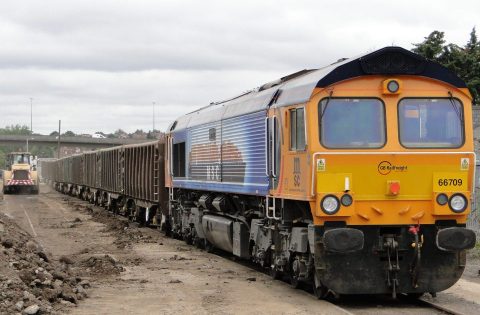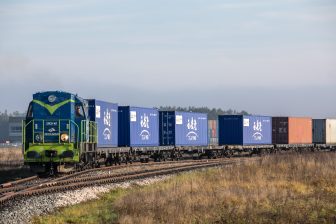
Movement of aggregates by rail rising in UK
The transportation of building aggregates by rail in the UK is rising significantly faster than the general rail freight market, according to a new independent report. More than 16 million tonnes of aggregates were moved to more than 70 different depots around England, Scotland, Wales and Northern Ireland during 2015.
In its report, Estimated outputs of aggregates moved through rail depots in Great Britain, BDS Marketing Research says the industry has increased the proportion of its total rail freight output, despite an overall fall in the volume of freight moved by rail in recent years.
New facilities
Andy Sales, author of the report, said: “Since the recession, aggregates companies have increased the share of output moved by rail by more than 65 per cent. We are expecting this to increase in the next few years following the recent activity in new facilities being opened and planned.”
Of the 16 million tonnes of aggregates transported in 2015, the majority was moved around the south east of England, mainly in crushed rock, of which reserves are limited. The south east accounts for around 70 per cent of the total volume handled at depots nationwide.
Transport aggregates
Rail freight movements as a whole in the UK fell by more than 20 per cent in 2015/16 against the previous year, largely due to falling coal movements. However, the proportion of total aggregates supply transported by rail is on the increase. During the period 2008-2014, the use of rail to transport aggregates increased by over 65 per cent.
BDS says the ability to transfer road movements to the rail network is attractive to both aggregates companies and the Government, as each strives to follow a ‘green’ agenda and boost their sustainability credentials by reducing carbon emissions. The success of this sector is highlighted by deals such as the recent agreement between DB Cargo and the Day Group for the expanded movement of sea-dredged aggregates into London for major building projects.
The report estimates the volumes and market shares of all of the companies operating aggregates rail depots by county, region and nationally. It also includes information on newly opened and planned rail depots.
To obtain a copy of the full report please email andy.sales@bdsmarketing.co.uk





